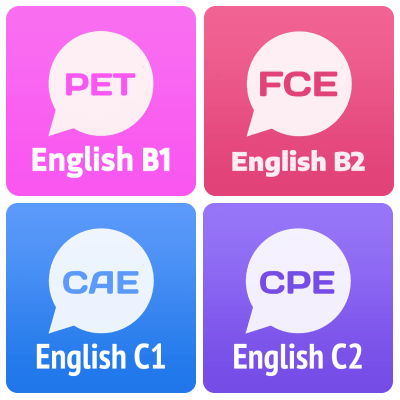Past Simple or Past Continuous?
This comparison highlights when to use the Past Simple for completed actions and the Past Continuous for ongoing actions in the past, often used in storytelling.
Back
Learn how to choose between the Past Simple and the Past Continuous
When Should I Use The Past Simple Tense?
Finished actions, states or habits in the past.
1. We use it with finished actions, states or habits in the past when we have a finished time word (yesterday, last week, at 2 o'clock, in 2003).
- I went to the cinema yesterday.
- We spent a lot of time in Japan in 2007.
2. We use it with finished actions, states or habits in the past when we know from general knowledge that the time period has finished. This includes when the person we are talking about is dead.
- Leonardo painted the Mona Lisa.
- The Vikings invaded Britain.
3. We use it with finished actions, states or habits in the past that we have introduced with the present perfect or another tense. This is sometimes called 'details of news'.
- I've hurt my leg. I fell off a ladder when I was painting my bedroom.
- I've been on holiday. I went to Spain and Portugal.
4. For stories or lists of events, we often use the past simple for the actions in the story and the past continuous for the background.
- He went to a café. People were chatting and music was playing. He sat down and ordered a coffee.
Unreal or imaginary things in the present or future.
5. We use the past simple to talk about things that are not real in the present or future. So we use it with the second conditional and after words like 'wish'.
- If I won the lottery, I would buy a house.
- I wish I had more time!
When Should I Use The Past Continuous Tense?
1. An action in the past which overlaps another action or a time. The action in the past continuous starts before and often continues after the other shorter action or time..
- I was walking to the station when I met John. (I started walking before I met John, and maybe I continued afterwards.)
- Please call back as we are eating dinner now.
- At three o'clock, I was working. (I started before three o'clock and finished after three o'clock.)
2. In the same way, we can use the past continuous for the background of a story. (We often use the past simple for the actions.) This is really a specific example of Use 1.
- The birds were singing, the sun was shining and in the cafés people were laughing and chatting. Amy sat down and took out her phone.
3. Temporary habits or habits that happen more often than we expect in the past. We often use 'always', 'constantly' or 'forever' here. This is the same as the way we use the present continuous for habits, but the habit started and finished in the past. This thing doesn't happen now.
- He was always leaving the tap running.
- She was constantly singing.
4. To emphasise that something lasted for a while. This use is often optional and we usually use it with time expressions like 'all day' or 'all evening' or 'for hours'.
- You're forever losing your keys!
- She's constantly missing the train.
- Lucy's always smiling!
5. The next use is for definite future arrangements (with a future time word). In this case we have already made a plan and we are pretty sure that the event will happen in the future.
- I was working in the garden all day.
- He was reading all evening.
We can't use this tense (or any other continuous tense) with stative verbs.
